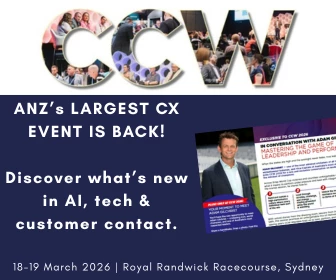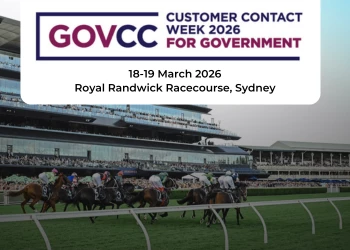An Interview with Brand Bubblist John Gerzema
Add bookmark
According to branding phenomenon John Gerzema, author of The Brand Bubble, the best brands today communicate excitement, dynamism and creativity. So what do Pixar, Wikipedia, Adidas and the iPhone have that other brands don’t? We asked Gerzema how he collected and analyzed the data to compile a chart of the highest performing brands today. What he found was sobering: The amount of trust consumers place in a brand today is a ghost of what it was more than 10 years ago. In this interview we find out why Pixar is sparkling and Bank of America is sinking, and learn how marketers can understand today's sophisticated consumer.
In your book you have a graph "The Universe of Brand Performance" where you highlight some of the leading brands. You must have done extensive research to get this data together. What was the data collection process like and what surprising facts did you discover?
We went through a very rigorous process to reach our conclusions. Working with professors from leading business schools, we spent two years examining over 10 years of data from BrandAsset Valuator, the world's largest study of consumer perceptions on brands. And we found that while brand value had increased by over 80 percent in three decades, the number of high-performance value-creating brands was diminishing across the board. Across 2,500 brands in our survey, brand awareness declined 20 percent, brand esteem was down 12 percent, perceptions of brand quality eroded by 24 percent, while trust in brands declined by a staggering 50 percent.
Then we realized that almost 80 percent of brands in our study were not gaining in differentiation. And of those that were not simply standing still were twice as likely to be in decline. How could brand values be increasing? This told us that Main Street had a far different view than Wall Street and not all brands were creating superior value for their firms as business was lead to believe.
You've said there is a new raised consumer’s creativity quotient. What is the creativity quotient and what is the result of what you termed the "democratization of creativity"?
I think if you look at the world today, you obviously have a very sophisticated consumer. We’ve been saying for 15 years they’re hip to marketing, can see through a strategy and understand when they’re being sold. They became even more discriminating earlier in this decade, witness the masstige movement and our cultural appreciation for design. And now our cultural appetite for creativity is expanding for two reasons.
One, because content is accessible 24/7 with the advent of social media, search, data storage, mobile media and other disruptive media platforms like Twitter and Hulu. Secondly, we have more creative brands and innovation in more places in our life. We have interesting brands like Geico in Car Insurance, Virgin Atlantic in airlines and Kogi in ‘mobile fast food’. All of this is stimulating and makes us want more beauty in our life.
You write that marketers are "skipping along happily stressing reason over emotion and persuasion over inspiration, still believing that customers can be programmed to form lifelong relationships and that brands can forever maintain their intangible elixir of attraction and cachet." Why is this problematic, and how/why do marketers need to wake up?
The new reality is that brands will have to think in new ways and work much harder to be different and special in an increasingly commoditized world. Yet the traditional business models and strategies marketers have used for generations no longer work. Their failure stems from the birth of a fundamentally different consumer, whose behavior has changed so rapidly and so profoundly it requires an entirely new vision of brand management.
We constantly see enterprises continuing to manage brands according to principles that have not changed for decades. Brand management is more like "brand maintenance": It tries to control brands, creating consistency and predictability in a world that now demands businesses surprise, innovate, adapt and respond. Brand equity is seen in terms of sales, rather than velocity. But the ground beneath brands has irrevocably shifted. Today, brand momentum is brand management—momentum that creates expectation and anticipation. We need to manage brands continuously and navigate them forward.
You talk about "energy" and its powerful role in commoditized industries. What is "energized differentiation" and why do the brands that have this quality see the biggest return?
In 2004, we discovered a key consumer perceptual component of brands that was highly related to movements in stock price. We found that a few brands were absolutely stellar, doing exceedingly well among consumers and advancing far ahead of their competitors and some were leaping out of the category.
We observed consumers being captivated by a quality that reflected a more exciting, dynamic and creative experience. We saw them concentrating their passion, devotion and purchasing power onto an increasingly smaller portfolio of special brands—because they keep exciting and evolving.
We discovered that what these stellar brands have in common is a more powerful form of differentiation. We called it Energized Differentiation, which reflects a brand's questing spirit for continuous change and evolution.
These brands aren’t just different—they keep being different by utilizing motion, momentum and creativity.
Energy plays a significant new role in protecting and enhancing brand differentiation. Energy has three measurable components:
- Vision—The brand’s purpose and aspirations, often originating from its leadership, convictions and reputation of the company behind the brand.
- Invention—The most tangible dimension, demonstrating the brand’s vision through product/service innovation, design, content and other tactile brand experiences.
- Dynamism—How the brand expresses its vision in a dynamic way in the marketplace to create persona, emotion, advocacy and evangelism through its marketing and other forms of conversations with consumers.
How can brands build sustainable long-term value to get back into alignment with Wall Street’s expectations?
In The Brand Bubble we walk the reader through a five-stage model to drive the brand through their organization and to collaborate from the standpoint of what the consumer wants. This process involves the entire enterprise recognizing that the brand imperatives are one and the same as the organizational imperatives.
Every department and division, including outside vendors, suppliers, partners—everyone in the brand’s value chain—plays a role in fueling the energy of the brand, by contributing creativity and ideas that lead the brand forward. The company has to become what we call an Energy-driven Enterprise, and this especially means that the entire company has to become marketing-led, not just a company with a marketing department.
Most importantly, in developing the process to ignite energy into their brands, we identified what we call the Five Laws of Energy. These five laws now govern the new ConsumerLand, where as we said, consumers have new demands and power. These five laws help enterprises re-examine how they approach and implement their creativity, their messaging, their flexibility and ability to evolve their brand, their approach to marketing, and their use of strategies and tactics.
Energized Differentiation teaches us that marketing is everywhere in the firm. The best CEOs are CMOs and the best-managed brands have people who think like brand managers across all functions and lines of business.
Interview by Blake Landau




















